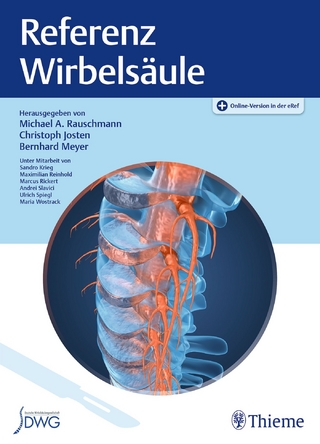
Intracranial Pressure & Neuromonitoring XVI
Springer International Publishing (Verlag)
978-3-319-65797-4 (ISBN)
Thomas Heldt is the W.M. Keck Career Development Professor in Biomedical Engineering at MIT's Institute for Medical Engineering & Science. He is also an Associate Professor of Electrical and Biomedical Engineering in MIT's Department of Electrical Engineering & Computer Science and a Principal Investigator with MIT's Research Laboratory of Electronics where he directs the Integrative Neuromonitoring and Critical Care Informatics Group. Dr. Heldt studied Physics at Johannes Gutenberg University, Germany, at Yale University, and MIT. In 2004, he received the PhD degree in Medical Physics from MIT's Division of Health Sciences and Technology and commenced postdoctoral training at MIT's Laboratory for Electromagnetic and Electronics Systems. Dr. Heldt's research interests focus on signal processing, mathematical modeling, and model identification to support real-time clinical decision making, monitoring of disease progression, and titration of therapy, primarily in neurocritical and neonatal critical care. In particular, Dr. Heldt is interested in developing a mechanistic understanding of physiologic systems, and in formulating appropriately chosen computational physiologic models for improved patient care. His research is conducted in close collaboration with colleagues at MIT and clinicians from Boston-area hospitals.
Part 1 Traumatic Brain Injury.- Cerebral perfusion pressure variability between patients and between centers.- Pre-hospital predictors of impaired ICP trends in continuous monitoring of paediatric traumatic brain injury patients.- Prognosis and outcomes of severe traumatic brain injury in children.- Do ICP - derived parameters help to differentiate Vegetative State (VS) from other outcome groups after traumatic brain injury?.- The Cerebral Arterial Compliance in Severe Head Injury.- The erebrovascular Resistance in Severe Polytraumazed Patients with Intracranial Hematomas.- Computed tomography indicators of deranged ICP-derived indices in paediatric traumatic brain injury.- Mean square deviation of ICP in prognosis of outcomes in severe TBI of children.- KidsBrainIT - A new Multi-centre, multi-disciplinary, and multi-national Paediatric Brain Monitoring Collaboration.- Cerebral haemodynamics during experimental increases in ICP.- What determinesoutcome in patients that suffer raised intracranial pressure after traumatic brain injury?.- Visualisation of the 'Optimal Cerebral Perfusion' landscape in severe traumatic brain injury patients.- Is there a relationship between optimal cerebral perfusion pressure guided management and PaO2/FiO2 ratio after severe traumatic brain injury?.- Part 2 Brain Monitoring Technology.- Non invasive intracranial pressure in brain injured patients: a comparison between three methods based on Duplex Color.- ANALYSIS OF A NONINVASIVE INTRACRANIAL PRESSURE MONITORING METHOD IN PATIENTS WITH TRAUMATIC BRAIN INJURY.- Comparison of different calibration methods in a non-invasive ICP assessment model.- An Embedded Device for Real-Time Noninvasive ICP Estimation.- Transcranial Bioimpedance Measurement as a Non-Invasive Estimate of Intracranial Pressure.- Pulsed electromagnetic field .- Volumetric Ophthalmic Ultrasound for Inflight Monitoring of Visual Impairment and Intracranial Pressure.- Does the variability of evoked TMD data (Vm) increase as the magnitude of the pulse amplitude increases?.- ANALYSIS OF MINIMALLY INVASIVE INTRACRANIAL PRESSURE SIGNALS DURING INFUSION IN THE SUBARACHNOID SPINAL SPACE OF PIGS.- A Wearable Transcranial Doppler Ultrasound Phased Array System.- Comparison of macro- and microcirculatory cerebral blood flow in healthy controls using contrast-enhanced ultrasound.- HDF5 based data format for archiving complex neuro-monitoring data in Traumatic Brain Injury patients.- Part 3 Neurocritical Care Informatics.- Influence of general anaesthesia on slow vasogenic waves of intracranial pressure.- Critical closing pressure during controlled increase in intracranial pressure.- Effect of mild hypocapnia on critical closing pressure and other mechanoelstic parameters of cerebrospinal system.- Occurrence of CPPopt values in uncorrelated ICP an ABP time series.- Simultaneous transients of ICP and heart rate.- Increasing the Contrast-to-Noise Ratio of MRI Signals for theRegional Assessment of Dynamic Cerebral Autoregulation.- Linear and nonlinear SVM finite imputes response.- ICP and antihypertensive drugs.- ICP: From correlation to causation.- A waveform archiving agent for the GE Solar.- Deriving PRx and CPPopt from 0.2 Hz data: Establishing Generalizability to Bedmaster Users.- MFER Representation of Neurointensive Care Waveform Data.- Multi-Scale Peak and Trough Detection Optimised for Periodic and Quasi-Periodic Neuroscience Data.- Room air readings of brain oxygen probes.- What do we mean by cerebral perfusion pressure?.- Investigation of the relationship between the burden of raised ICP and the length of stay in a neuro-intensive care unit.- Optimal cerebral perfusion pressure in a prospective traumatic brain injury cohort.- Part 4 Hydrocephalus and CSF Biophysics.- Visual Impairment Intracranial Pressure Syndrome-Related Globe Deformations in Astronauts are linked to CSF Volume Increase.- MRI criteria for diagnosis of communicating chronic hydro
"This book will be of most interest to bioengineers interested in cerebrovascular autoregulation, CSF biophysics, and physiological monitoring of the brain. It also will be of some interest to academic neurotraumatologists and neurointensivists. ... The editor has provided an index of key words at the end of the book, referred to as a 'subject index' that will efficiently take the reader directly to the studies of interest to them." (DonaldW. Marion, Neurosurgery, Vol. 84 (4), April, 2019)
| Erscheinungsdatum | 02.03.2018 |
|---|---|
| Reihe/Serie | Acta Neurochirurgica Supplement |
| Zusatzinfo | XII, 330 p. 124 illus., 52 illus. in color. |
| Verlagsort | Cham |
| Sprache | englisch |
| Maße | 210 x 279 mm |
| Gewicht | 970 g |
| Themenwelt | Medizin / Pharmazie ► Medizinische Fachgebiete ► Anästhesie |
| Medizinische Fachgebiete ► Chirurgie ► Neurochirurgie | |
| Medizin / Pharmazie ► Medizinische Fachgebiete ► Intensivmedizin | |
| Schlagworte | Anaesthetics • Anesthesiology • Cerebral autoregulation • Hydrocephalus • Intensive Care Medicine • Intensive / Critical Care Medicine • Intracranial pressure • Medicine • Medicine: general issues • Neurocritical Care • neurosurgery • stroke • traumatic brain injury |
| ISBN-10 | 3-319-65797-6 / 3319657976 |
| ISBN-13 | 978-3-319-65797-4 / 9783319657974 |
| Zustand | Neuware |
| Informationen gemäß Produktsicherheitsverordnung (GPSR) | |
| Haben Sie eine Frage zum Produkt? |
aus dem Bereich


